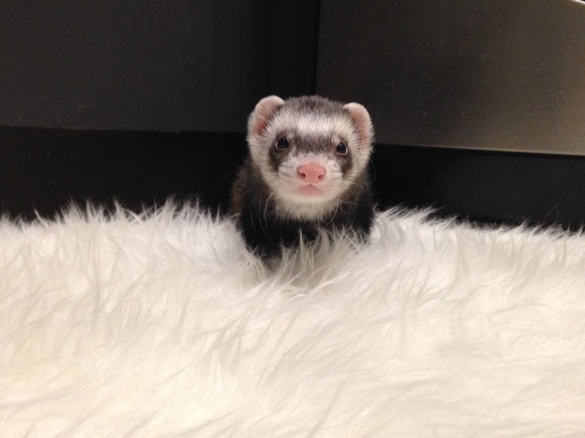Now you are serious about getting a furry but don’t know where to start. The best thing that I can suggest for everyone is when you decide that a ferret is what you want; you have the time, you are dedicated, etc. Start by going to your local ferret shelters, find out if they would mind if you came there and spent some time with the ones they have available.
By arranging some time with your local ferret shelter you will know first hand of what must be done on a daily basis, which is also a good option for children wishing to own a ferret. The other benefit is you can help out the owner to catch up on things while giving the ferrets extra attention!
Another thing to look at is the age of your soon-to-be ferret. If this is your first ferret adopting a baby (kit) might be too hectic, while a senior could ease you into it.
All too often the older ones or those that have had previous surgeries are forgotten about. Yet these ferrets make wonderful companions as they already come trained and tend to be a bit more laid back. Their personality/temperament is known, unlike a kit. Some ferrets are here for a short time – 2 or 3 years – while some ferrets live to be 8 or 9 years old.
That 3 or 4 year old ferret in the shelter could very well out live the baby ferret from the pet store. The older ferrets seem to bond very strongly with their adoptive mom or dad, it is almost like they know they have a second chance to be loved.
Every furry friend deserves a good life, one with a lot of love and proper care. Personally I recommend against choosing a ferret for colour, as throughout a ferret’s life they can completely change from one look to another. There was a ferret named Bandit whom was adopted with a very dark typical sable look, turned white one year and passed away this year with a cinnamon coloured mask and very light sable pattern throughout.
As for allergies; some people who are allergic to cats or other animals are often not allergic to ferrets! However there’s no way to tell from person to person unless they actually go and find a ferret then test it out. Our shelter mom often suggests you handle a baby ferret. If you are going to have an allergy, it shows up quicker from a kit.

